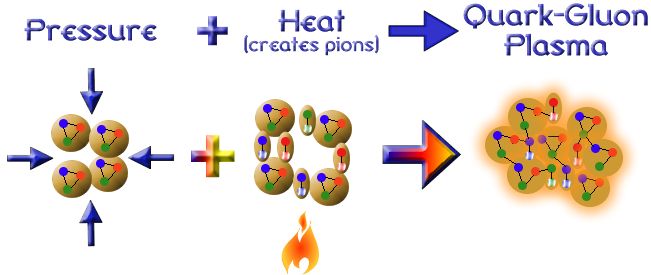Word of caution: Some (meta)physics again!
For people who are familiar with my previous blog entries, my metaphysical inclination to any subject would not be new. This post is, in short, an application of my very little metaphysical knowledge to the subject in hand.
By definition:
Metaphysics is a branch of philosophy exploring the fundamental questions, including the nature of concepts like being, existence, and reality. It has two branches – cosmology and ontology. Traditional metaphysics seeks to answer, in a “suitably abstract and fully general manner”, the questions: What is there?And, what is it like?
Wait, isn’t this exactly the reason why we have science - to answer and keep empirically proving/disproving these answers.
(Oh, not the science vs philosophy debate again!)

What is so special about philosophy?
Human beings are natural philosophers. They have the ability to observe and learn. Our ability to speculate about nature (anticipate and act) helped us survive evolution. Language helped us communicate our speculations or understandings and even frame them as a complex cultural system. It is this system that influences our view of the world. Ancient philosophers did not claim to invent anything, rather, they put forth their views and interpretations in a logical, complex system.
Now for connecting the dots…
The Internet is filled with articles that claim scientists like Einstein, Newton et. all, derived inspiration from Vedas and Upanishads. Before labeling those claims as over-exaggeration, a quick look at the concept of Natural Philosophy would explain why they took those books as references.
Natural philosophy or philosophy of nature (from Latin Philosophia Naturalis) was the philosophical study of nature and the physical universe that was dominant before the development of modern science. It is considered to be the precursor of natural science.
So, metaphysical works will provide pointers to the questions that science is trying to answer. That is the reason for scientists’ interest in metaphysical works.
But wasn’t this supposed to be next in series for Thiruppavai?! Yes! With all my metaphysics rants in mind, here is the interpretation of verse 2.
வையத்து வாழ்வீர்காள் நாங்கள் நம் பாவைக்கு
செய்யும் கிரிசைகள் கேளீரோ பாற்கடலுள்
பைய துயின்ற பரமனடிபாடி
நெய்யுண்ணோம் பாலுண்ணோம் நாட்காலே நீராடி
மையிட்டேழுதோம் மலரிட்டு நாம் முடியோம்
செய்யாதனசெய்யோம் தீக்குறளை சென்றோதோம்
ஐயமும் பிச்சையும் ஆம்தனையும் கைகாட்டி
உய்யும் ஆறெண்ணி உறங்கேலோரெம்பாவாய்
Thanks to Krishna for Today for this beautiful visual!
Verse 1’s last line said it is Narayana is our destination. So, verse 2, naturally goes about with description of the destination and ways to reach it.
The above verse can be loosely translated as follows:
வையத்து வாழ்வீர்காள் நாங்கள் நம் பாவைக்கு செய்யும் கிரிசைகள் கேளீரோ
Hey you people who are born to live(not just born) on Earth, let me tell you the dos and don’ts in order to attain the Lord.
பாற்கடலுள் பைய துயின்ற பரமனடிபாடி
The lord, who is reclining on adisesha in the cosmic ocean!
நெய்யுண்ணோம் பாலுண்ணோம் நாட்காலே நீராடி மையிட்டேழுதோம் மலரிட்டு நாம் முடியோம் செய்யாதனசெய்யோம் தீக்குறளை சென்றோதோம் ஐயமும் பிச்சையும் ஆம்தனையும் கைகாட்டி
We would avoid ghee or milk(giving up sensory pleasures), we will not adorn ourselves with kajal or flowers(giving up personal pleasure), we would avoid bad-mouthing and harsh word (giving up anger/hatred on a fellow human being). We would rather give alms and charity to the who ask with their hands and show desire in their eyes.
உய்யும் ஆறெண்ணி உறங்கேலோரெம்பாவாய்
We will seek to live in the best possible way to reach the Lord!
This verse, in short, says(my interpretation), give up the worldly desires and help the needy, this will be the best possible way for you to reach the Almighty!
Something of special interest in this verse is the line: பாற்கடலுள் பைய துயின்ற பரமனடிபாடி
In the previous verse, we saw the usage of the word Narayana to represent the Paraman.
In Sanatana Dharma, there are zero nouns to describe God. It’s all adjectives. Thanks to Sunder for this eye-opener.
Keeping this in mind, when we look at the word Narayana we get two interpretations(there are more, but we will look at these two for explanation purpose):
Narameaning Human andAyanameaning the goal, and putting them together,Narayanameans one who helps human attain mokshaNarameaning Water andAyanameaning residing in, and putting them together,Narayanameans one who resides in water.
I am particularly interested in the second interpretation - One who resides in water.
What makes them say this? Why would he reside in water and not in anything else?
If we say, God(Narayana) is the cause of the world, it must contain or has within it, the potentiality of becoming a world or creating all existence. In other words, சட்டியில் இருந்தால் தான் அகப்பையில் வரும்.
Take a look at this representation of Big Bang.

Majority of the action happened between the 10^-43 to the 1-second timeline. If we superimpose the scientific terminology(quarks, antiquarks) on to the Rig Veda slokas, we arrive at an interesting theory.
What you see below is the all famous color confinement animation demonstrates, how energy is supplied to the quarks, and the gluon tube elongates until it reaches a point where it “snaps” and forms a quark-antiquark pair. In simple words, we pull a rubber band(gluon tube) so hard (force) that we end up having two distinct bands( quark and antiquark)

To understand the term quark in reference to our known devil, atom take a look at the image below.
Now, lets form a story of creation: Due to high temperature in the outer space, the universe was constantly oscillating. A strong force enters this constantly oscillating universe and produces a pool quark/antiquark pairs. This quark/antiquark pair brings order to the universe. From there the universe started to evolve and progress.
Now to get back to the context, Narayana is that infinite(adishesha) energy who is the reason for the creation of the quark/anti-quark pair(consciousness, maybe), brings order to the universe and resides as an energy that creates matter from the pool of quarks(cosmic ocean).
Putting it even more concise, He is the infinite energy who created the cosmic ocean and who resides in every particle in the cosmic ocean. He can neither be created nor be destroyed.
This is what the scientist claim to be Quark-Gluon Plasma (video on QGP)

Hence, as mentioned in the previous post, Tri vikrama/Narayana’s three strides are the impact of this energy in three regions - earth, mid-air and outer space.
References:
- Nasadiya Sutka - Translation
- Aditya Hrudayam - Translation
